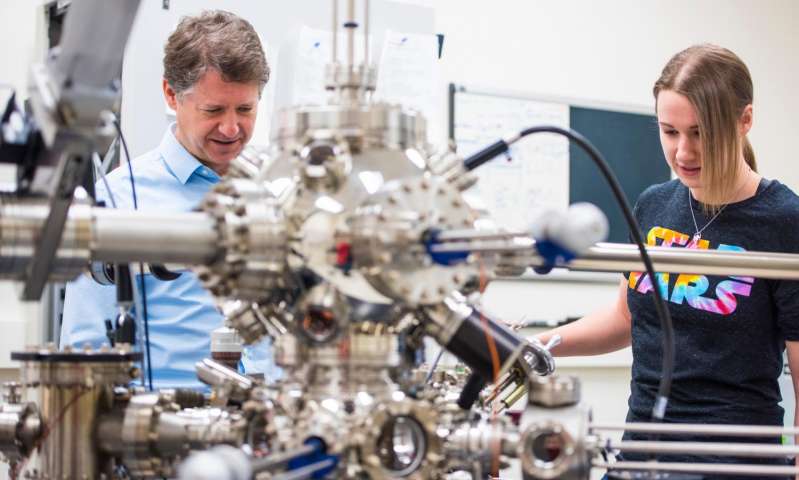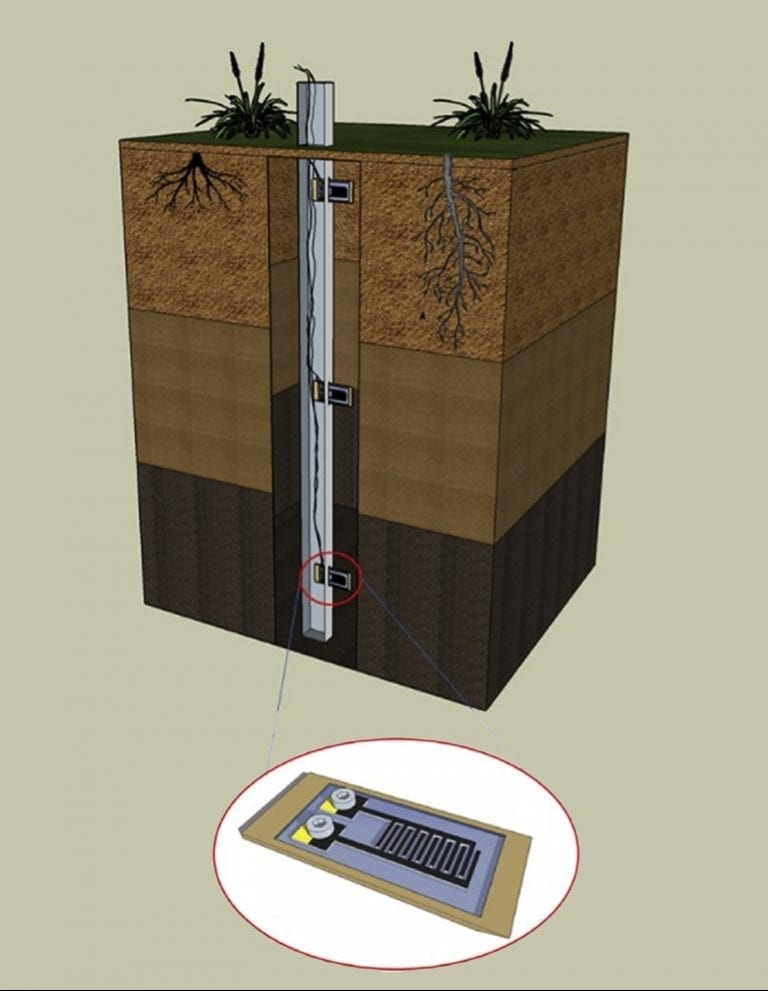
A quasi-particle that travels along the interface of a metal and dielectric material may be the solution to problems caused by shrinking electronic components, according to an international team of engineers.
“Microelectronic chips are ubiquitous today,” said Akhlesh Lakhtakia, Evan Pugh University Professor and Charles Godfrey Binder Professor of Engineering Science and Mechanics, Penn State. “Delay time for signal propagation in metal-wire interconnects, electrical loss in metals leading to temperature rise, and cross-talk between neighboring interconnects arising from miniaturization and densification limits the speed of these chips.”
These electronic components are in our smartphones, tablets, computers and security systems and they are used in hospital equipment, defense installations and our transportation infrastructure.
Researchers have explored a variety of ways to solve the problem of connecting various miniaturized components in a world of ever shrinking circuits. While photonics, the use of light to transport information, is attractive because of its speed, this approach is problematic because the waveguides for light are bigger than current microelectronic circuits, which makes connections difficult.
Surface plasmon-polariton (SPP) waves have been known for a long time, but the mathematics behind them requires solving complex equations. Lakhtakia and colleagues investigated the theoretical transport of information by using an SPP wave as a carrier wave and pulsing the wave in a way similar to the way Morse code electrically pulses through a telegraph line.
The researchers report in a recent issue of Scientific Reports that “The signal can travel long distances without significant loss of fidelity,” and that “signals can possibly be transferred by SPP waves over several tens of micrometers (of air) in microelectronic chips.”
They also note that calculations indicate that SPP waves can transfer information around a concave corner — a situation, along with air gaps, that is common in microcircuitry.
SPPs are a group phenomenon. These quasi-particles travel along the interface of a conducting metal and a dielectric — a non-conducting material that can support an electromagnetic field — and on a macroscopic level, appear as a wave.
According to Lakhtakia, SPPs are what give gold its particular shimmery shine. A surface effect, under certain conditions electrons in the metal and polarized charges in the dielectric material can act together and form an SPP wave. This wave, guided by the interface of the two materials can continue propagating even if the metal wire has a break or the metal dielectric interface terminates abruptly. The SPP wave can travel in air for a few 10s of micrometers or the equivalent of 600 transistors laid end to end in a 14 nanometer technology chips.
SPP waves also only travel when in close proximity to the interface, so they do not produce crosstalk.
The problem with using SPP waves in designing circuits is that while researchers know experimentally that they exist, the theoretical underpinnings of the phenomenon were less defined. The Maxwell equations that govern SPP waves cover continuum of frequencies and are complicated.
“Instead of solving the Maxwell equations frequency by frequency, which is impractical and prone to debilitating computational errors, we took multiple snapshots of the electromagnetic fields,” said Lakhtakia.
These snapshots, strung together, become a movie that shows the propagation of the pulse-modulated SPP wave.
“We are studying tough problems,” said Lakhtakia. “We are studying problems that were unsolvable 10 years ago. Improved computational components changed our way of thinking about these problems, but we still need more memory.”
Learn more: Jumping the gap may make electronics faster
The Latest on: Pulse-modulated SPP wave
[google_news title=”” keyword=”pulse-modulated SPP wave” num_posts=”10″ blurb_length=”0″ show_thumb=”left”]
via Google News
The Latest on: Pulse-modulated SPP wave
- Journal of Fluid Mechanicson May 4, 2024 at 2:45 pm
This journal utilises an Online Peer Review Service (OPRS) for submissions. By clicking "Continue" you will be taken to our partner site https://mc.manuscriptcentral ...
- Aortic Pulse Wave Velocity: An Independent Marker of Cardiovascular Riskon April 25, 2024 at 5:00 pm
Aortic pulse wave velocity, a classic index of aortic stiffness, may be easily measured in humans using noninvasive ultrasound methods of high reproducibility. Recent epidemiologic studies have ...
- Aortic Pulse Wave Velocity: An Independent Marker of Cardiovascular Riskon April 14, 2024 at 5:00 pm
Aortic pulse wave velocity, a classic index of aortic stiffness, may be easily measured in humans using noninvasive ultrasound methods of high reproducibility. Recent epidemiologic studies have ...
- 2004 Blue Wave Boats 213 PULSE/CC Prices and Specson March 13, 2023 at 8:54 pm
Boat Cover - 7 ft. thru 14 ft. Boat Cover - 15 ft. thru 19 ft. Boat Cover - 20 ft. thru 25 ft. Boat Cover - 26 ft. thru 31 ft. Boat Cover - 32 ft. thru 42 ft. Boat Cover - Custom - 18 ft. thru 25 ft.
- EECE.5430 Theory of Communication (Formerly 16.543)on July 13, 2022 at 12:16 am
Statistical properties of noise. Spectral analysis and design of AM, FM and pulse modulation systems, continuous and discrete. AM, FM, and various pulse modulation methods, in the presence of noise.
- Chapter P: PABX Pulse Code Modulation (PCM)on March 10, 2018 at 6:12 pm
The public switched telephone network, or PSTN, is a circuit-switched network. This means that a telephone call reserves a 64 Kbps physical circuit between the endpoints (caller and callee, or, for ...
- Mechanical Pulse Generatorson February 20, 2018 at 7:04 am
Supplier: Data Delay Devices, Inc. Description: Features: Input & output fully TTL interfaced and buffered. Low profile. Commercial & military types. Continuously adjustable. Multi-turn adjusting ...
- Pulse Density Modulationon September 7, 2015 at 6:18 pm
[esot.eric] was trying to drive a motor and naturally thought of using pulse width modulation (PWM) to control the motor speed. However, he found that even with a large capacitor, his underpowered ...
- Pulse Width Modulation With Microcontrollerson June 26, 2011 at 9:11 am
Those following the ProtoStack tutorials will be happy to hear that there is a new installment which explains Pulse Width Modulation. If you’ve never heard of PWM before, it’s a method of ...
via Bing News










